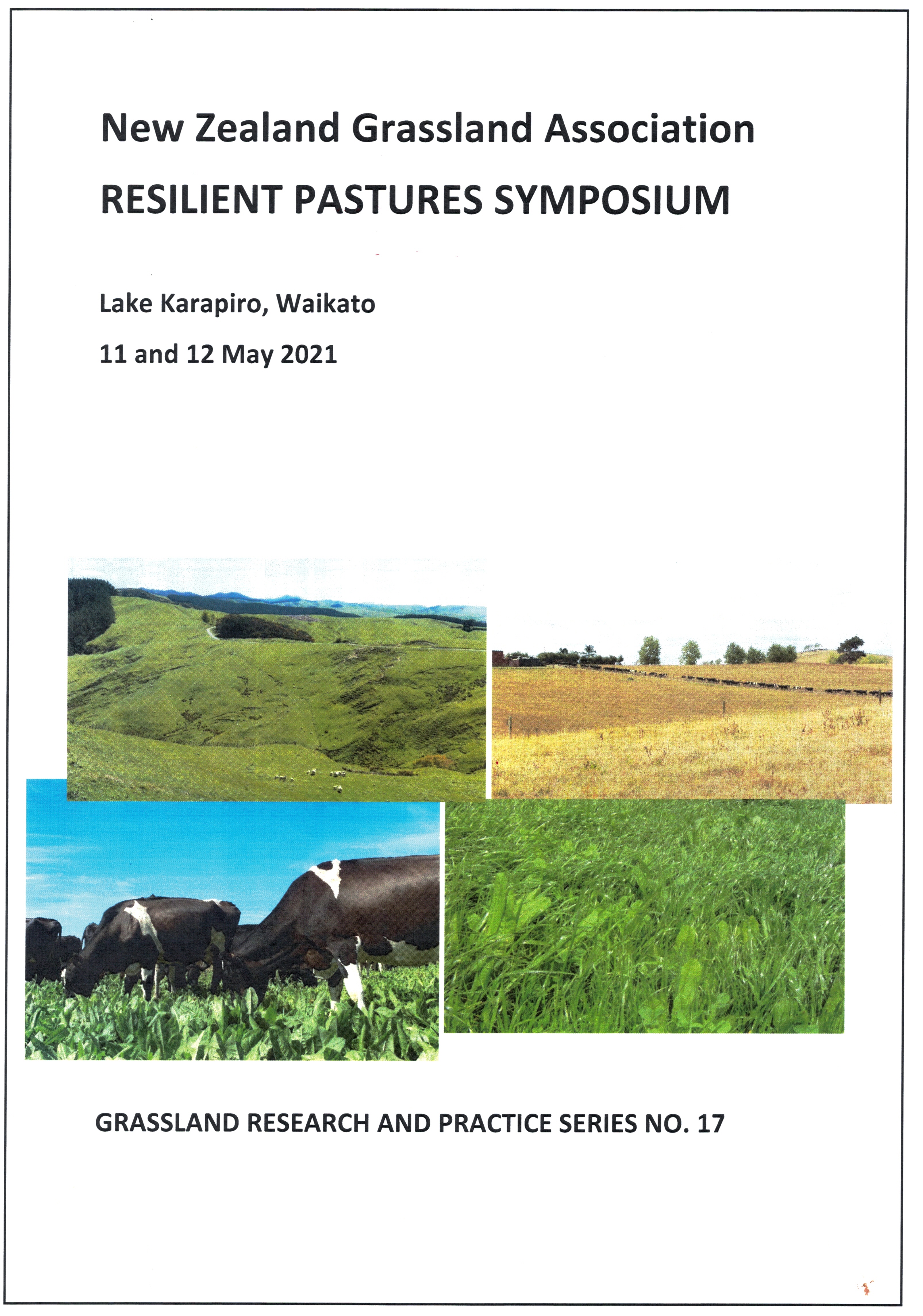Persistence of the yield advantage of perennial ryegrass cultivars: concept, evidence and implications
DOI:
https://doi.org/10.33584/rps.17.2021.3452Keywords:
evaluation systems, pasture persistence, plant traitsAbstract
Pasture persistence can be defined several ways, but a key outcome for farmers is that the yield advantage of a new pasture compared to the pasture it replaced persists for several years after sowing. The concept of persistence of the yield advantage can also be applied to genetic evaluation of cultivars in species such as perennial ryegrass to determine the true value of pasture renewal and cultivar selection. We analysed 8 years of yield and tiller density data from pastures sown to four perennial ryegrass cultivars representing different functional types at two locations, Waikato (non-irrigated) and Canterbury (irrigated). ‘Grasslands Nui’ SE (Nui) was designated as the baseline cultivar. A significant yield advantage over Nui was observed for two cultivars (Alto AR37 and Halo AR37). Peak yield advantage occurred 4 or 5 years post-sowing, then declined by approximately 50% and became nonsignificant by Year 8. The pattern was very similar at both locations. Tiller density data indicated a shift in sward structure over time consistent with size-density trade-offs in the diploid cultivar Alto AR37 but not in the tetraploid cultivar Halo AR37. The implications for economic evaluation systems such as the DairyNZ Forage Value Index are discussed.
Downloads
Published
How to Cite
Issue
Section
License
Copyright
This work is licensed under a Creative Commons Attribution-Non Commercial-NoDerivatives 4.0 International License. Rights granted to the New Zealand Grassland Association through this agreement are non-exclusive. You are free to publish the work(s) elsewhere and no ownership is assumed by the NZGA when storing or curating an electronic version of the work(s). The author(s) will receive no monetary return from the Association for the use of material contained in the manuscript. If I am one of several co-authors, I hereby confirm that I am authorized by my co-authors to grant this Licence as their agent on their behalf. For the avoidance of doubt, this includes the rights to supply the article in electronic and online forms and systems.


